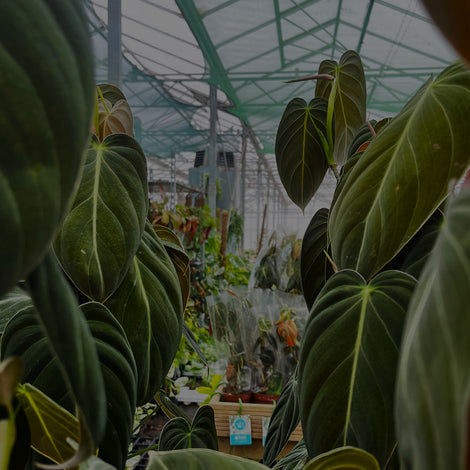How often should you water your houseplants?
One of the questions we’re asked most by our customers is: how often should you water house plants?
The answer is, it depends! Different plants need varying amounts of water and other factors can have an impact on the frequency of watering so it can be tricky to get it right.
The majority of houseplants will need watering every one to three weeks so it’s important to keep an eye on them. This way you will learn each plants habits and needs so will understand when they need watering. We have put together a quick guide to help you understand when your house plants might need watering and how much.
Categories for watering
Houseplants can be divided into three categories for watering:
1. Plentifully
Plants such as calatheas, lilies and spider plants need watering plentifully which is every five to ten days.
You should allow much of the water to run out and the top layer of soil can dry out before they need watering again.
2. Moderately
Rubber trees, figs, philodendrons, pothos and monsteras only need watering every 10 to 20 days and you can allow the top few inches of soil to dry before watering again.
The soil should be left semi-dry and watered until just water comes up from the bottom.
3. Sparingly
ZZ plants and succulents typically need watering every 20+ days. The top half of the pot should be left to dry before you water again.
When watering these plants, only water until the soil has absorbed some but don’t soak the soil with water.
How to tell when plants might need watering
The above is a rough guide for each type of plant but, there are other ways to check whether your plant needs water or not. You can use the following signs as indicators of whether or not your plants are due more water.
Test soil dryness
It may sound simple but, putting your index finger into the potting mix around your plant to see how dry or moist is it will tell you whether you should water your plant again.
This will allow you to tell whether the top few inches of soil is damp or dry. As we outlined above, the depth at which the soil is dry will indicate whether or not the plant needs watering.
We suggest doing this at least once a week so you know when your plants might need a drink.
Look out for signs of wilting
Leaves that look like they’re wilting or drooping can be a common sign that your plants need water or that you are not watering them enough. However, be careful not to use this method alone as signs your plants need watering. It can also be due to overwatering and disease so checking the soil conditions too is important here.
What other factors affect the amount of water houseplants need?
Following our pointers above should help you to give your plants adequate amounts of water and to keep them alive. However, there are a number of other factors that may also affect how often your houseplants need watering including:
Size of the plant
Larger plants will need more water than smaller plants. But, bear in mind that smaller plants that are growing quickly or rapidly, may require more than more mature, slower growing large plants.
Temperature
If the indoor temperature is high it can increase evaporation and the metabolic rate of your plants so they will need more water. Temperatures in your home can fluctuate throughout the year so keeping an eye on plants and the temperature will be a good indicator of how often they need watering.
Humidity
The level of humidity in your home will have an impact on how quickly water evaporates from the soil and the rate of transpiration from the leaves. So, plants in rooms such as the bathroom where humidity levels are higher will need more water.
Type of pot
More porous materials such as terracotta loose water much faster than plastic pots. Plastic pots prevent water loss through the sides of the pot so plants in this type of pot will retain water for longer.
Time of year
The time of year has a massive impact on the amount of water needed. In the winter, most houseplants will grow slowly or become dormant and will require much less water than in the summer when they’re growing profusely.























Leave a comment
Please note, comments need to be approved before they are published.